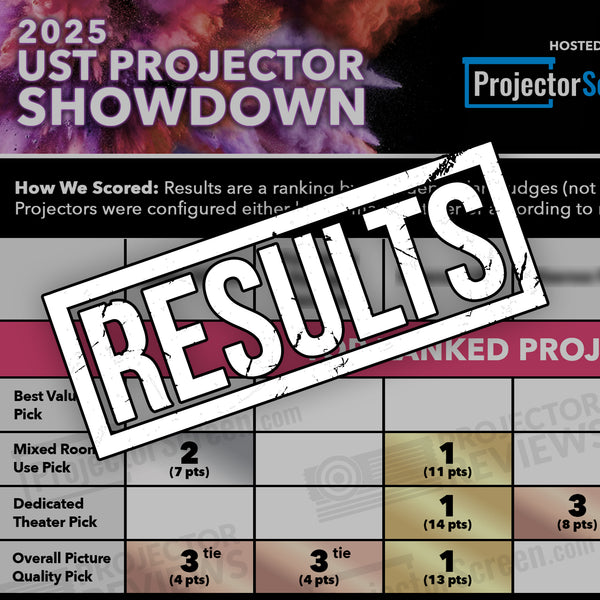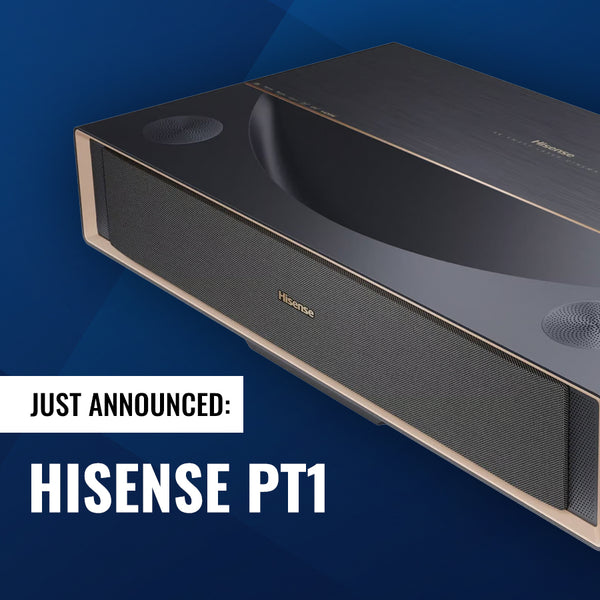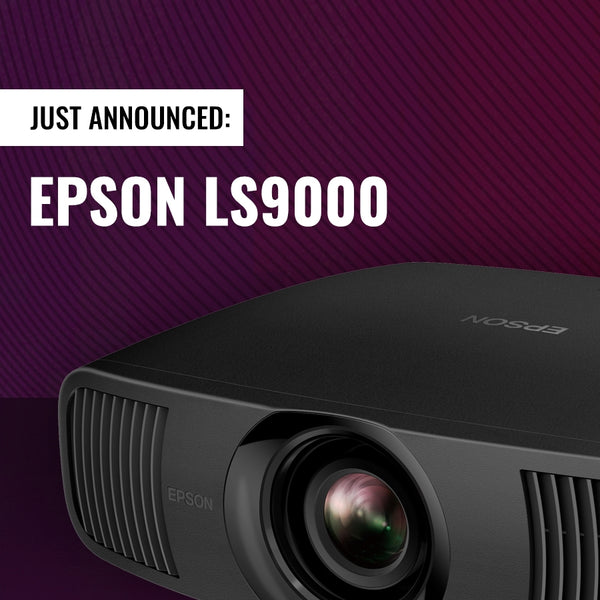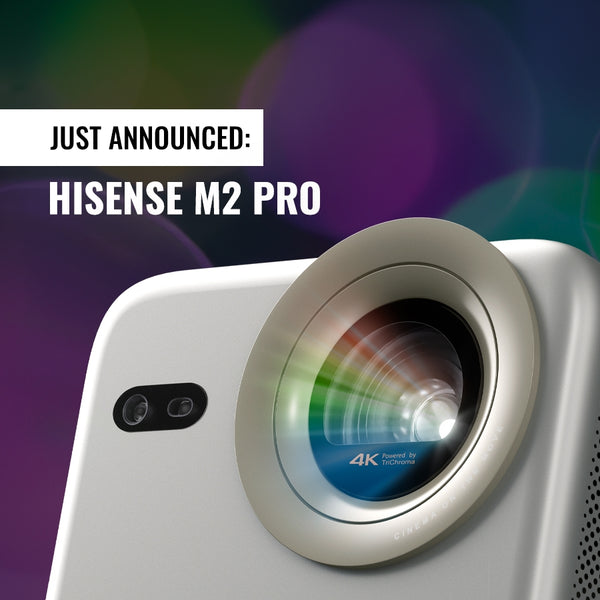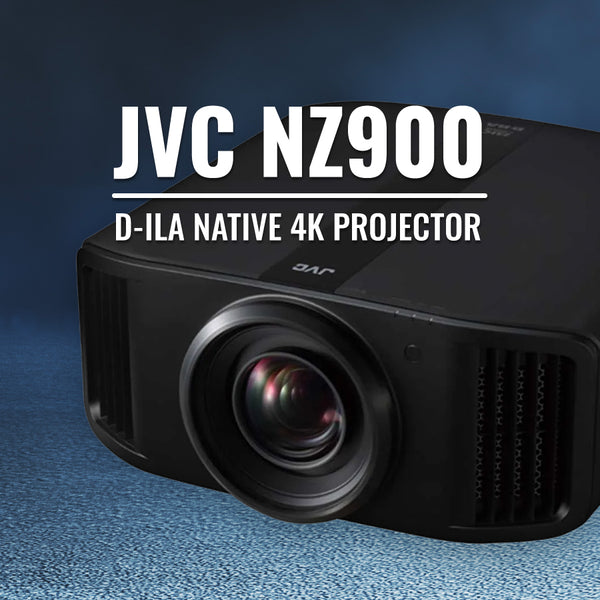Home Theater Surround Sound Formats
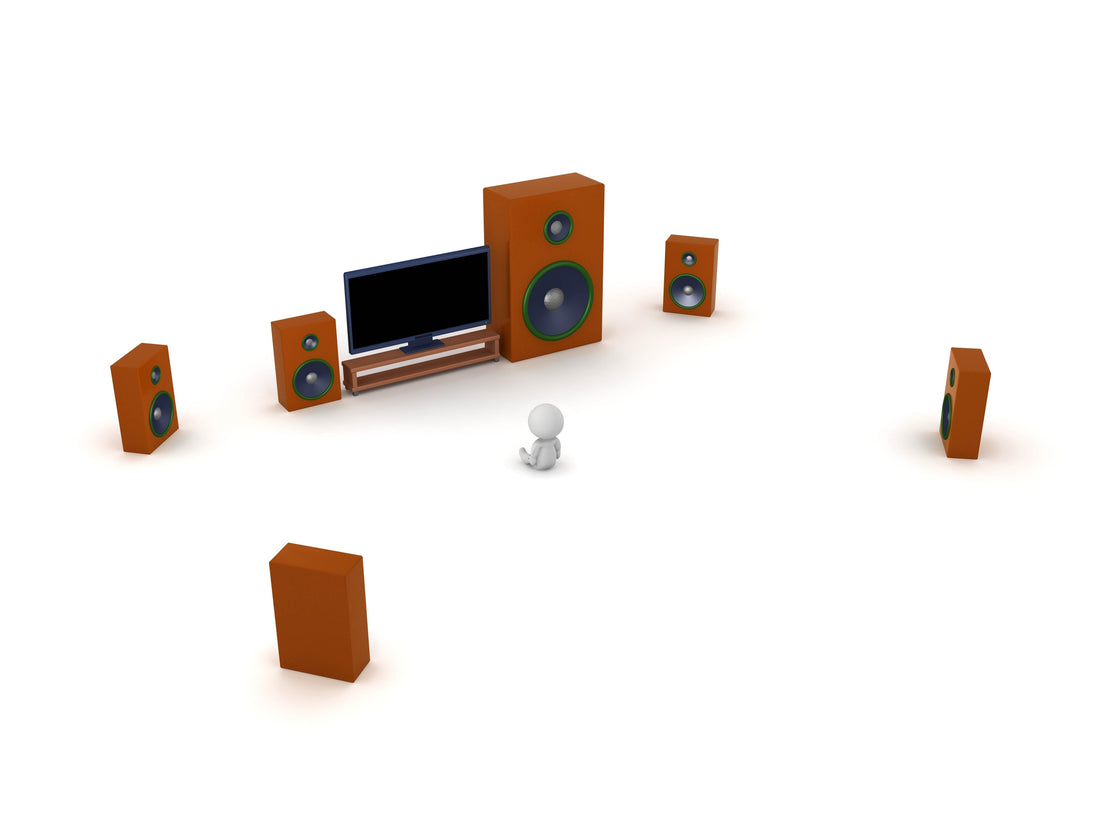
Surround sound immerses the audience in the home theater experience. It brings the flat image on your home cinema projector to life. A well-calibrated surround sound system can make sounds from anywhere around the audience not just where the speakers are located. So, when a character on screen throws an object at the audience they might duck as whistles overhead and crashes behind them.
When you design a home theater, the surround sound effect is created by decoding one of a variety of surround sound formats. The most common surround format today is called Dolby Digital 5.1. Nearly every DVD sold has a Dolby Digital soundtrack.
Surround sound formats can provide two things. Most importantly is the method of surround sound by dividing a soundtrack into many channels of sound. More advanced surround methods like Dolby Digital and DTS provide analogue to digital conversion, which means they determine the sampling and bit rates from the analogue source material.
Here are the major surround sound formats of past, present and very near future:
Quadraphonic or Quad
In the early 1970s, a new method of recording music entered the consumer market. Quadraphonic was an early surround sound method that failed to capture mainstream attention.
Quad was a true four-channel analogue method for recording and playing back sound. This meant it could produce four discrete channels of full range sound. It was the first attempt to make any surround method available for home use. Frankly, the world was underwhelmed.
Quadraphonic at a glance
- The first consumer multi-channel audio format.
- Provides four separate channels of sound.
- Not compatible with stereo playback.
- Costly, requires format-exclusive hardware and recorded source material.
- Format made obsolete by digital multi-channel formats.
Quad was relegated as no more than a niche curiosity for a variety of reasons. Since source material had to be encoded in Quad, you had to buy 4-channel playback gear and special Quad versions of your favorite records and 8 track tapes. Then extra speakers and an amplifier for the extra channels made Quad no small investment.
If buying all this extra gear wasn't enough to isolate it from the mainstream marketplace, there were also competing standards of Quad to add more than a pinch of consumer confusion. The only practical purpose for Quad was music playback. At this time there was no home theater, movies were viewed in theaters and in the home you watched TV shows recorded and played back in mono.
Dolby Surround

In the early 1980s, consumers were making their first foray into digital storage media, and the Compact Disc was replacing analogue storage methods like records and tapes. People started watching movies at home on VCRs, and home theater began to take form. But two-channel audio for music and now film was firmly entrenched. When Dolby introduced Surround in 1982, they had clearly learned from Quadraphonic's errors.
Dolby Surround at a glance:
- Dolby's first consumer multi-channel surround format.
- Three-channel surround matrix: Left and right front, one rear surround channel.
- Not a true multi-channel format, as third channel is a matrix of the stereo source.
- Compatible with stereo source material, only requires a decoder or receiver.
- Lack of center channel can cause uneven soundtrack distribution and muffled dialogue.
- Made obsolete by newer surround matrix system Dolby Pro Logic that adds a needed center channel.
Dolby Surround was a three-channel matrix surround method. Matrix means it isn't really a three-channel system, just two. The third channel is "matrixed" from the two-channel stereo signal. Certain sounds that were common in both left and right channels within a limited frequency would get sent to the rear channel to be played from two usually smallish speakers in the back of the room. Since the range to the rear was limited, this meant the rear sound effects only added some ambient qualities and didn't project a lot of sound. Small surround speakers became the norm.
The significance of this method's compliance with two-channel stereo cannot be understated. It was the reason Dolby Surround and especially the later improvement to Surround in Pro Logic really took off. This meant your CDs and VHS tapes (popular two-channel source material of the era) could be read by a receiver with Dolby Surround, without having to buy a new CD player, VCR, tapes, CDs, etc. Yes, it was technically inferior to Quadraphonic, but it was cost effective because it fit snugly into the two-channel audio system of the day.
Dolby Pro Logic / Pro Logic II
Dolby Labs introduced Pro Logic surround in 1987. Pro Logic improved on the original Dolby Surround format by adding a matrix center channel. This made Dolby Pro Logic a four-channel surround matrix created from just two discreet (stereo) channels. The rear channel still had bandwidth limitations so only certain sounds were diverted to those speakers.
Pro Logic remains alive and well today as a method of decoding two-channel material. Even with the most advanced multi-channel home theater system today, Pro Logic is still there to enhance our two channel sources. Most of what we watch on TV is presented in two channels, as are music CDs.
Dolby Pro Logic at a glance:
- Four channel surround matrix: Left and right front, one rear and one center.
- Pro Logic II is a 4.1 channel matrix (adds bass management with subwoofer).
- Extra channels based on sound from existing stereo soundtrack.
- Compatible with all two-channel source material, only requires a decoder.
- Surround matrixes are not as dynamic as discreet surround formats.
In 2001, Dolby Pro Logic II further enhanced Pro Logic several ways. Dolby removed the bandwidth limitations on the rear channel and added a low frequency matrix for bass management making Pro Logic II a 4.1 surround matrix. All of this from two channel source material (later to be one-upped by competitor DTS and their Neo:6 two-channel matrix). Pro Logic II receivers can give the user control over the depth and width of the soundstage by remote control.
Dolby Digital

In 1992, Dolby labs launched its revolutionary audio standard Dolby Digital to theaters at the premier of Batman Returns. The new format they called AC-3 at the time wasn't yet available to the home market.
Dolby Digital at a glance:
- Dolby Digital is the most popular audio format for DVD today.
- Consists of five full frequency channels and one LFE for 5.1
- Fully digital audio format carries the information of 5 RCA jacks on 1 digital cable.
- Requires all playback hardware to be compatible to properly decode.
Dolby Digital 5.1 consists of six discreet channels of sound:
- 2 front speakers for sound effects to the left and right of the screen
- a center for all the sounds emitting from on screen including dialogue
- 2 full-frequency rear channels for sounds behind and to each side of the audience
- and a low-frequency effects channel that requires a subwoofer but only uses one-tenth the bandwidth of the other channels, so it's the 0.1 channel.
In 1996, the first DVD players hit the market and Dolby Digital quickly became the de-facto audio standard for the new media. Today, nearly every DVD has a Dolby Digital soundtrack.
The presence of a Dolby Digital surround track doesn't necessarily mean all six channels will be used, however. Older films whose soundtracks are converted from their original stereo or mono analogue soundtracks are cheaply digitized directly to Dolby Digital with almost no discernable change.
Only if the DVD release stipulates that a "remastered" version of the soundtrack is available will Dolby Digital use the surround or LFE channels.
Dolby Digital EX (THX EX)
The most advanced surround formats for home theater are the extended formats, Dolby Digital EX and its competition DTS ES.
Dolby Digital EX was co-developed by Lucasfilm's THX, so it's also called THX-EX. Legend has it that George Lucas himself, unsatisfied with Dolby Digital 5.1, felt there was a way to improve on this format. THX and Dolby Labs teamed up and came up with an extra surround channel they called rear surround. This extra channel is just a matrix of the left and right rear channels, meaning it's only made up of the existing rear channels sound, so it's not a true 6.1 or 7.1 process at all.
Dolby Digital (THX) EX at a glance:
- It's Dolby Digital with an extra back surround matrix.
- Requires 6 or 7 speakers and a subwoofer and a compatible receiver or preamp.
- Extra surround channel is not discreet, not a true 6.1 or 7.1 surround format.
- EX-encoded material is fully backward-compatible to Dolby Digital 5.1.
- Extra surround back speakers might be a tough sell in most living rooms.
The new format was released to theaters amid the highly commercial synergistic hoopla of Lucas's own Star Wars Episode One: The Phantom Menace.
DVDs encoded in Dolby Digital EX have soundtracks optimized for the use of that extra rear channel but receivers decoding Dolby Digital 5.1 won't miss out on any sounds. In fact, properly positioned rear speakers should create the illusion of a phantom center speaker. The presence of the extra channel can only accentuate the surround channels imaging.
SDDS
SDDS is a digital sound format comprised of the SDDS soundtrack, optically printed on both edges of 35mm film, and SDDS playback hardware. The SDDS surround format consists of eight discreet channels of sound.
For now, you have to go to the movies to enjoy SDDS surround. Sony's SDDS is exclusive to theater motion pictures sound, as there is no home theater equivalent to SDDS yet.
DTS
The reign of Dolby Digital as the king of multi-channel audio hasn't gone uncontested. In 1993, DTS first appeared in theaters with the release of Jurassic Park. By 1996, DTS was being used as an alternative to Dolby Digital on many DVD soundtracks.
DTS is a 5.1 surround process with identical capabilities to Dolby Digital consisting of the same six discreet channels: Front left and right, rear left and right, center and low-frequency effects or LFE (subwoofer).
DTS at a glance:
- Alternative to Dolby Digital but features identical 5.1 channels.
- Compresses larger than Dolby Digital, takes up more space on DVDs.
- Hi-res audio capabilities make DTS theoretically superior to Dolby Digital.
- Fully digital audio format carries the information of 5 RCA jacks on 1 digital cable.
Debate rages over which audio format is better, DTS or Dolby Digital. Some will cite DTS's technical capabilities of higher-resolution sound to argue it must be better. A DTS soundtrack uses up more space on a DVD than Dolby Digital, a fact that some consider troublesome and believe is a waste of space that could be used for additional special features.
DTS can use its size to present higher-resolution sound than Dolby Digital, with a maximum audio resolution of up to 96/24. This means 96 KHz sampling rate and 24-bit samples of the original analogue audio source. CD sound is 48/16. DTS soundtracks probably won't take full advantage of this resolution unless stated on the DVD case. But many listeners agree that it still sounds more natural than Dolby Digital.
Some DTS soundtracks are instantly recognized as superior. DTS versions of Saving Private Ryan and Gladiator are renowned as amazing soundtracks that sought to one-up their Dolby Digital counterparts.
Ultimately the choice is yours, but the consumer wins with healthy competition in the marketplace.
DTS Neo 6
Neo 6, DTS's foray into a multi-channel matrix from two-channel source, was created to compete with Dolby Digital II. Neo 6 succeeds in one-upping Pro Logic II with the addition of an extra rear channel, a center surround. The speaker setup for Neo:6 includes front left and right, a center, two rear speakers for a single surround channel and one or two surround rear speakers play an additional rear surround channel and a sub channel for low-frequency bass management.
Since Neo 6 is a surround matrix it is not a true discreet multi-channel format, but builds six channels of sound out of two channel stereo like Dolby Pro Logic. This means the surround effects won't be as dynamic, and separation of the channels won't be as distinct as it would be with discreet multi-channel formats. But its advantage is that it creates this multi-channel matrix from any two-channel source such as an older stereo movie, CD or VCR.
Neo 6 at a glance:
- DTS Neo 6 is a 6-channel matrix surround sound format.
- Extra channels based on sound from existing stereo soundtrack.
- Multi-channel matrixes are not as dynamic as discreet multi-channel formats.
- Compatible with all two-channel source material.
There is some consumer confusion about extended surround formats like Neo 6, Dolby Digital EX or DTS ES. Some manufacturers refer to their receiver, sound card, speaker systems or other devices as 7.1 systems. This is misleading because at present there is no discreet 7.1 surround format. A receiver might have seven discreet amplifiers and a sub output, which is generally a good thing. But at present there is no format that makes use of that many discreet channels.
DTS ES
DTS ES is an extended digital surround format intended to compete with Dolby Digital (THX) EX. DTS ES adds an extra matrix-encoded surround back channel that can be played through one or two speakers from behind the audience.
DTS ES at a glance:
- DTS ES 6.1 Discreet is the only true 6.1 surround format available.
- Requires 6 or 7 speakers and a subwoofer and a compatible receiver or preamp.
- Encoded material is backward compatible to DTS.
- Decoder hardware for DTS ES is very expensive.
- Extra speakers might be difficult to place in most living rooms.
DTS ES has an even newer second variety called DTS ES Discreet 6.1. This is the first true 6.1 surround format. All six channels of sound are discreet and not formed from a matrix.
To decode DTS ES you will need a DVD encoded in the format and a DTS ES-capable decoder (receiver or pre-amp/processor). There are few receivers or pre-amps capable of decoding this format today and the ones that exist are expensive.
A probable downside for the extended surround formats is the extra speaker requirement and the space they might take, especially when seating might be back up against the wall.
DVD Audio

Compact Disc has been around over 20 years and from it we learned how well digitally recorded audio can sound on low-cost equipment. DVD Audio is one of two new high-resolution multi-channel audio formats.
Not only is DVD Audio recorded in 5.1 channels, but the resolution of all five channels is much higher than that of two channel PCM recordings found on CD. CDs recorded in Pulse Code Modulation (PCM) take 16-bit samples at a rate of 44.1kHz from two channels. DVD Audio uses 5 discreet channels taking up to 24-bit samples at a rate of 96KHz. In other words, sound from a DVD Audio is so over-sampled with a frequency response of 0-96kHz a well-made DVD Audio disc is like listening to a master tape.
DVD Audio media cannot be played on a regular DVD player, you must look for the DVD Audio logo on the player. To play back DVD Audio, you require a 5.1 channel analogue input on your receiver as DVD Audio won't output through digital formats. HDMI stands to be the first digital interface to support DVD Audio. Fans of the format look forward to universal DVD players and receivers that support HDMI.
DVD Audio is currently only a niche market. The DVDs themselves aren't yet widely available. DVD players that play DVD Audio tend to be more expensive. You're not likely to hear any difference between a well-recorded CD and DVD-Audio's higher resolution unless you're using a higher-end system with good speakers.
Growth of the format has suffered due to competition with media giant Sony, who came out with their own high-resolution multi channel audio format called SACD. But new Universal DVD players can play both formats.
Multi-channel audio allows a more immersive musical experience, especially if it can capture the ambience of a live performance. But many feel multi-channel audio is gimmicky and don't have any use for music outside two channels. Like CD, DVD Audio's quality will have to be judged by individual discs. Some discs might not take full advantage of the format's capabilities and may not sound any better than a regular CD.
SACD

When improvements to the humble Compact Disc were being engineered in the mid-90s, it seemed like the DVD Audio format was to be the heir. The Beta videotape format must have worked out so well for Sony, they decided to strike out in their own direction again with a strictly licensed proprietary format. The Super Audio CD (SACD) was born.
SACD uses the Direct Stream Digital (DSD) signal processing technique. This process takes 1-bit (sigma-delta modulation) samples at a frequency of 2.8224 MHz. In comparison to DVD Audio's high-resolution PCM technique, SACD is completely revolutionary, taking rather small samples at an incredibly high rate. Like DVD-Audio, SACD is also a 5.1 surround format designed for music. Fans of SACD claim in comparison to DVD-Audio it sounds warmer, more like an analogue recording, where DVD-Audio can seem sterile in its presentation.
Whatever the reason for Sony striking out in their own direction with SACD, it nearly killed both formats. Nothing makes consumers fickle like new technology with competing incompatible formats. Only Sony could have the clout to cause such a setback, since Sony owns some 50% of all music ever recorded destined never to be etched into DVD Audio.
Today, universal DVD players are hitting the market that can play both formats. After the long wait it might be well worth it to have variety, however it is unlikely any music will be released in both formats.
THX
THX is not a home theater format but a standard. Home Theater equipment doesn't decode THX, but is THX-certified.
THX was born in 1980 when George Lucas, film director extraordinaire, decided that movie theaters gave inconsistent performances and set about to create a universal standard.
Today the THX standard also exists for the home. For equipment to wear the THX logo it must be of high quality and is usually expensive. Manufacturers interested in THX certification sends samples to the Lucas ranch, where they run it through a battery of technical tests, many of which are unpublished. The THX certification is supposed to ensure audio quality consistent with the theater at home.
Recently, THX certification has come under some scrutiny by audiophiles for the new division into two categories: THX Select and THX Ultra. Ultra is the designation for larger rooms (3,000 cubic feet or greater) and a set of slightly lower standards comprise THX Select for smaller rooms (2,000 cubic feet).
Some believe it might be a relaxing of standards for the sake of making THX more widely accepted. But even THX Select is only found on higher end equipment and a lot of very good audio manufacturers couldn't be bothered with THX certification at all. THX certification isn't the last word in quality, but if it wears the THX Select or Ultra certification, you can be assured its very good gear.
Recently, THX co-developed a new audio format called THX-EX, along with Dolby Digital, so the format is also called Dolby Digital EX. This was a synergistic move between the two companies that involved the premier of Star Wars Episode 1, more than a pinch of hype and much ado about one matrix-encoded surround channel derived from Dolby Digital 5.1.

